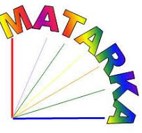Szemelvények a Vadonleső, önkéntesek munkáján alapuló természet-megfigyelő program első két évének eredményeiből
Absztrakt
Korunk egyik legnagyobb kihívása a biodiverzitás csökkenésének megállítása, a folyamat visszafordítása. Az elterjedt és viszonylag gyakori fajok megfigyelése óriási emberi erőforrás igénye miatt a szakemberekre gyakran kivitelezhetetlen feladatokat ró. A nagyközönség bevonása az ilyen jellegű tevékenységbe rengeteg értékes adatot szolgáltat és szemléletformáló szerepe is jelentős. Ezen célok megvalósítását célozza a 2009 szeptembere óta működő Vadonleső program, melyet a Vidékfejlesztési Minisztérium (VM) tart fent. A program indulásakor 9, jelenleg már 16 könnyen felismerhető, hazánkban elterjedt, védett állat- és növényfaj adatai rögzíthetőek GoogleMap alapú felület segítségével, on-line módban. A beérkezett adatokat az adatbázisba illesztés előtt specialisták validálják. A két éves működés alatt több, mint 4700 megfigyelés érkezett, 1300 körüli adatszolgáltatótól. A legtöbb adatot a keleti sünről (Erinaceus roumanicus) kaptuk, de a közönséges mókus (Sciurus vulgaris) és a szarvasbogár (Lucanus cervus) is előkelő helyen áll a sorban. A rövidebb időintervallumban megfigyelhető növények közül a tavaszi hérics (Adonis vernális) vezet, közvetlenül a hóvirág (Galanthus nivalis) és a 2011. év vadvirága, a leánykökörcsin (Pulsatilla grandis) előtt. Az eddigi adatok azt mutatják, hogy a kiválasztott, könnyen felismerhető fajok felmérésébe nagyszámú önkéntes szívesen kapcsolódik be, és az általuk szolgáltatott adatok értékes adalékokkal szolgálnak a természetvédelmi munkához.
Hivatkozások
Bősze, Sz., Bakó, B. & Csorba, G. (2003): Research on distribution and ecology of red squirrel (Sciurus vulgaris) in Hungary. – Book of abstracts, 3rd International Colloquium on the Ecology of Tree Squirrels and 7th European Squirrel Workshop. Ford Castle, UK
Dimitrakopoulos, P. G., Jones, N., Iosifides, T., Florokapi, I., Lasda, O., Paliouras, F. & Evangelinos, K. I. (2010): Local attitudes on protected areas: Evidence from three Natura 2000 wetland sites in Greece – Journal of Environmental Management 91(9): 1847–1854
Európai Bizottság (2011): Életbiztosításunk, természeti tőkénk: a biológiai sokféleséggel kapcsolatos, 2020-ig teljesítendő uniós stratégia – A bizottság közleménye az Európai Parlamentnek, a Tanácsnak, a Gazdasági és Szociális Bizottságnak és a Régiók Bizottságának, Brüsszel, 19 pp.
Horváth, F., Rapcsák, T. & Szilágyi, G. (szerk.) (1997): Nemzeti Biodiverzitás-monitorozó Rendszer I. Informatikai alapozás Magyar Természettudományi Múzeum, Budapest, 164 pp.
Kis, J., Váczi, O., Katona, K. & Altbäcker, V. (1998): A növényzet magasságának hatása a cinegési ürgék élőhelyválasztására. – Természetvédelmi Közlemények 7: 117–123.
Szép, T. & Nagy, K. (2006): Magyarország természeti állapota az EU csatlakozáskor az MME Mindennapi Madaraink Monitoringja (MMM) 1999-2005 adatai alapján. – Természetvédelmi Közlemények 12: 5–16.






